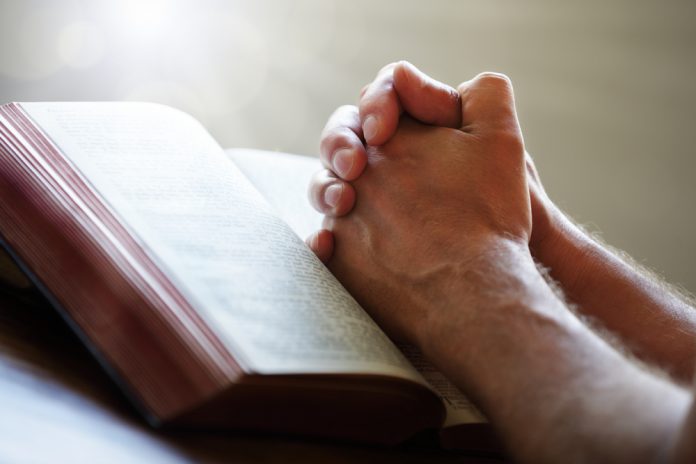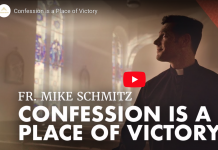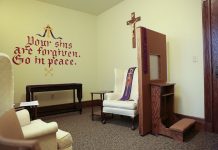
by Kate Ristow
See the end of this article for a worksheet and suggestions for using it to help your students reflect on their liturgical experiences.
Catechists aren’t liturgists! Yet, the National Directory for Catechesis tells us that catechists are called to promote “an active, conscious genuine participation in the liturgy of the Church, not merely by explaining the meaning of the ceremonies, but also by forming the minds of the faithful for prayer…” (n. 20, #2).
How can we do these things in our classrooms, and what do we need to know in order to do them? To answer these questions, I asked the best liturgist I know—D. Todd Williamson, Director of the Office for Divine Worship in the Archdiocese of Chicago—to participate in an email interview about liturgy and catechesis. As you read the article, you’ll quickly discover that Todd’s passion for liturgy is infectious!
CATECHIST: What is liturgy?
Williamson: Liturgy is the formal, official prayer of the Church. That’s to say, it’s not my own personal prayer; that which I do on my own, in private. Liturgy, on the other hand, is the prayer that I enter into as one among many. It’s the prayer that I give myself over to as I join my brothers and sisters, coming together as the Body of Christ in my parish community.
Liturgy is patterned. It’s ritualistic—it follows the same order each time. There are texts assigned to it—the Opening Prayer or the Eucharistic Prayer—that are the same for every celebration of that liturgy wherever, whenever.
Another distinguishing characteristic of liturgy is that it is always communal. Liturgical prayer is always the prayer of the community, the Church. We don’t enter into the liturgy as if it’s our own private time with God. In liturgy we are called out of our private prayer and called into the prayer of the Body of Christ—the Church.
This is not to say that in liturgy there aren’t times where we enter into a moment of personal prayer. For example, in the silence that should follow the readings in the Liturgy of the Word, or in the moments after we return to our place after receiving the Eucharist. But overall, the liturgy is, by nature, communal.
CATECHIST: Is there any difference between prayer and liturgy?
Williamson: As Catholics, we pray in a number of different ways. That is, we use various forms of prayer. For example, we may engage in devotional prayer, like the Rosary or the Stations of the Cross or novenas. Many of us also engage in scriptural prayer; we use a specific selection of Scripture, and we sit with just those few verses, letting the Word of God sink into our hearts and souls and letting the Spirit guide our prayer over those verses of Scripture.
These are forms of prayer. That is to say, all of these specific ways of praying have a form to them—a formula, if you will—which one follows when using that particular form of prayer.
Liturgical prayer (liturgy) is a specific form of prayer as well. When Catholics hear the word liturgy, most immediately think of Mass. Mass is our most preeminent liturgy, but it’s not the only one. All of the Sacraments are liturgies. Morning and Evening Prayer are liturgies, the Blessing of Animals on the Feast of St. Francis is a liturgy.
CATECHIST: Can catechists “do” liturgy in their classrooms, or does liturgy always have to take place in a church?
Williamson: Some of our liturgies require that they be celebrated, as much as possible, in the actual building of the church. That’s more because of what we believe the building of the church to be: the sacred space that the Lord designates as the formal place in which he engages the people he has claimed as his own—think of Mount Sinai for the Israelites or the Temple in Jerusalem for the Jewish people.
However, there are other liturgies of the Church that can be celebrated in places outside of the church building. Liturgies of the Word or the Orders of Blessings found in the Book of Blessings can definitely be celebrated in a classroom or other places where a group might gather. As long as there is a designated place from which the Word can be proclaimed, a place for the leader to lead, a place for the participants to participate—then yes, catechists can “do” liturgy in the place they gather with their students!
CATECHIST: What are some of your responsibilities as Director of the Office for Divine Worship?
Williamson: Primarily, I oversee the efforts to be of assistance to the archbishop in all areas that pertain to the liturgical life of the archdiocese. The staff of the office and I help prepare the major archdiocesan liturgies which the archbishop celebrates.
Second, we do the exact same thing for the parishes of the archdiocese! So we are a resource for them in regard to issues or questions around the parishes’ liturgical life. We offer programming or training for priests, deacons, directors of liturgy, music ministers, and other liturgical ministers. We also are a resource for (and get many calls from) DREs and catechists!
CATECHIST: Why does the celebration of the Eucharist vary from place to place? For example, bells are rung during the Consecration at a neighboring parish and they also “veil” the chalice by covering it with a piece of cloth. Shouldn’t the celebration of the Eucharist be the same everywhere?
Williamson: There are many parts of the Mass which the Church calls us to celebrate according to set norms and texts. For example, wherever Mass is celebrated, it is to follow the same order as given to us by the Church. There are many texts of the Mass that are to be used in every place—the Eucharistic Prayers, for example. No matter where the Mass is celebrated, bread and wine are to be used.
However, there are many other elements of the Mass where there are some options. The two situations mentioned in the question are, in fact, options that a parish may or may not choose to implement. Another example is the use of incense during Mass; one parish may choose to use it and another chooses not. Still another example is whether or not there is a Book of the Gospels used in the Mass or if there is a Gospel Procession before the Gospel is proclaimed.
Even within the parts of the Mass that must be there, there are choices. For example, every Sunday or weekday Mass must include a Penitential Act in the Introductory Rites. However, there are four options from which to choose for this. The option that my parish uses may be different from the option the neighboring parish chooses.
So, in reality, on any given Sunday, the celebration of the Mass will vary in some ways from place to place. However, in all parishes, in all places, the liturgical assembly will gather; there will be Introductory Rites which will lead us into the Mass; there will be the proclamation of Scripture; bread and wine will be offered to the Father; Communion will be shared; and Christ Jesus will once again be in our midst, in the power of the Holy Spirit—everywhere! And that is the Mass!
CATECHIST: What is your favorite liturgical season?
Williamson: I love the “purpose” of Lent! The Rites of the Church (for example the Rite of Christian Initiation of Adults) and even recent papal statements (e.g., Pope Benedict on Ash Wednesday in 2011) remind us of what’s at the heart of Lent for those of us who are baptized: recalling our Baptism and preparing to renew it at Easter! Yes, Lent is a time for recollection; it is a time for fasting, prayer, and almsgiving. It is a time of self-denial. It’s a time for penance. But none of those are ends in themselves! We don’t fast for the sake of fasting—we fast as a means of preparing us to renew our Baptism at Easter! Everything we do (or don’t do) during Lent is meant to help us, in one way or another, to prepare to renew our Baptism in the most important celebration we Catholics have in the Year: Easter!
CATECHIST: What are three things every catechist can do to help kids grow in their appreciation for liturgy?
Williamson: 1) Make Use of Symbol and Ritual
We are engaged by—shaped, formed, and taught by—the basic liturgical symbols of our tradition. Water, oil, bread and wine, touch, fire, ashes—all of these are means through which, we believe, God acts to claim us, heal us, feed us, redeem us, save us. Using these symbols and gestures in your catechetical setting can put us in touch with the mystery of our salvation through Christ. For example, when a Gospel story is part of your lesson, include a procession with the Gospel book in your prayer that week. Through this action and others, we get a sense of—a hint of, a glimpse of, a touch of—this great mystery which is beyond words.
2) Make Use of the Rhythms of the Cycles
The cycles of the liturgical year are a means through which our lives as disciples are given shape. Attending to these cycles reveals to us the realities of what it means to live a life in Christ. Through these cycles we observe and celebrate the fullness of the mysteries of Christ (cf. Constitution on the Sacred Liturgy, no. 102). The cycle of seasons (Advent/Christmas, Lent/Triduum/Easter, Ordinary Time) and the sanctoral cycle (the cycle of feasts and solemnities of the Lord, the saints, and the Blessed Virgin Mary) help to unfold for us, throughout the year, a school of discipleship. Through their rhythms we are shaped more and more, from year to year, into the image of Jesus Christ that we were baptized to be.
3) Use the Texts
Liturgical texts—all liturgical texts—are formative. As the constantly flowing water of the river shapes and forms the rocks and bed of the river, so too do the texts of liturgy, constantly flowing over us—Sunday to Sunday, season to season, year to year—shape and form us. Over the course of time, the images in these texts and the declarations and assertions which they voice shape and form our faith. They tell us who we are and what we believe about God, about Christ, about the Church, and about ourselves. Pray the Confiteor during Lent with your students. Pray the Apostles’ Creed with them during Easter.
Meet D. Todd Williamson
Childhood: Todd was born, baptized, confirmed, and welcomed to Communion in Lake Orion, MI, a small, suburban parish north of Detroit.
Educational Background: Todd’s undergraduate degree in English is from Sacred Heart Seminary in Detroit. He received a master’s in theological studies from Chicago’s Catholic Theological Union in 1996.
Professional Life: Todd began his career as a teacher of theological studies at Regina Dominican High School in Wilmette, IL. He then served as the Pastoral Associate at St. Ann Catholic Parish in Lansing, IL, for four years. He has been at the Office for Divine Worship in Chicago since 1999, first as Associate Director. He was named Director in 2001. In his “spare” time, Todd is an adjunct instructor for the archdiocese’s lay/diaconate formation program, adjunct instructor at the Institute for Pastoral Studies at Chicago’s Loyola University, and a popular speaker at conferences.
Todd’s most recent publication (with Joseph Paprocki) is Great Is the Mystery: Encountering the Formational Power of Liturgy (Chicago: Liturgy Training Publications, 2013). Each year Todd is a contributing author of Liturgy Training Publications’ popular resource, Sourcebook for Sundays and Seasons.
Kate Ristow, Contributing Editor to CATECHIST, has worked in Catholic publishing for over 25 years as a national speaker and writer, building on a wealth of experience in the religious formation of children and catechists in both parish and Catholic school programs.
Reflecting on Liturgical Experiences
Begin by brainstorming with the class the different types of liturgies in which they have participated. For example, they may name the Mass, Baptism, First Communion, a Christmas pageant, Stations of the Cross, the May Crowning, the Blessing of Pets, and so forth. List their responses on the board. Then ask students to describe what made these liturgies memorable for them. At the end of the discussion, distribute the worksheet [CLICK HERE] and encourage everyone to spend a few moments thinking and writing about their liturgical experiences. When everyone has finished, invite volunteers to share their responses with the class.
Copyright 2013, Bayard, Inc. All rights reserved. This article is protected by United States copyright and other intellectual property laws and may not be reproduced, rewritten, distributed, redisseminated, transmitted, displayed, published or broadcast, directly or indirectly, in any medium without the prior written permission of Bayard, Inc.
This article was written by the Catechist Staff and appeared in Catechist magazine, January 2013.
Image Credit: Brian A Jackson/Shutter Stock 145450387




